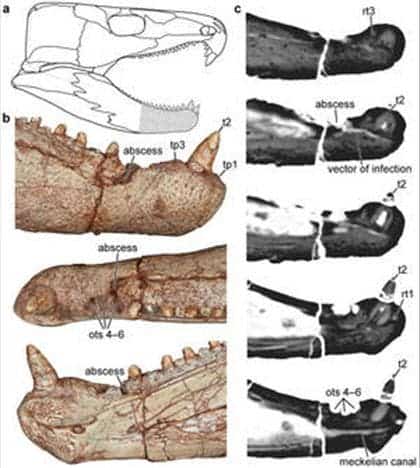
Paleontologists turned into dentists after an examination of the fossilized jaw of a reptile from the Paleozoic era revealed what’s considered to be the world’s oldest tootache.
Dated back 275 million years ago, the Oklahoma found Labidosaurus hamatus must have had some serious issues with its sugar tooth, as researchers observed missing teeth and eroded bones in its jaw, which poissed them to dwell a bit further. Led by Robert Reisz, the chair of the Department of Biology at the University of Toronto Mississauga, scientists decided to investigate further with a CT-scan – they soon found evidence of a major infection that had caused the loss of several teeth and a massive abscess.
“Not only does this fossil extend our understanding of dental disease, it reveals the advantages and disadvantages that certain creatures faced as their teeth evolved to feed on both meat and plants,” said lead researcher Robert Reisz. “In this case, as with humans, it may have increased their susceptibility to oral infections.”
What apparently happened, researchers conclude, is that the reptile lost a tooth, which consequently became a hole, and through that hole a heck load of bacteria flooded and extended itself to other adjacent healthy teeth. This is exactly what Reisz was pointing out, since it shows how important evolution influenced this particular case. Because the Labidosaurus’ diet was plant based, ergo a lot of chewing was involved, it gradually evolved from the primivitive dental setup in which teeth were loosely attached to the jaws and continuously replaced (see sharks) to teeth that were strongly attached to the jaw, with little or no tooth replacement.
The downside to this, however, is pretty evident as outlined, which in way explains why humans are also very susceptible to dental infections if a parallel is to be made.
“Our findings suggest that our own human system of having just two sets of teeth, baby and permanent, although of obvious advantage because of its ability to chew and process many different types of food, is more susceptible to infection than that of our distant ancestors that had a continuous cycle of tooth replacement,” Reisz said.
The study is detailed online in the journal Naturwissenschaften — The Science of Nature.


